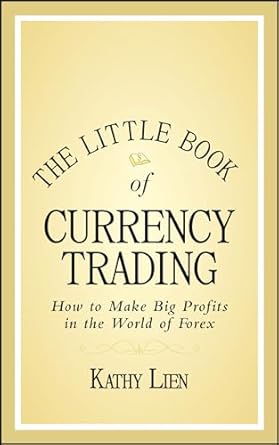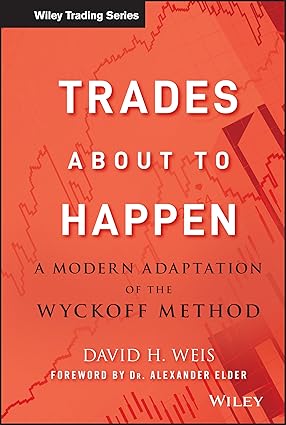Introduction
Are you tired of chasing every market move and still getting nowhere?
If you’re someone who wants to master the art of swing trading without spending hours glued to the screen, this blog post is for you.
We’re diving into the incredibly practical and insightful book “13 Swing Trading Strategies” by Pankaj Ladha and Anant Ladha – two of India’s finest financial educators. Whether you’re just stepping into the world of trading or you’re looking to refine your current strategies, this book lays out a structured, time-tested approach that actually works.
📚 Ready to grab your copy of the book? Click here to get “13 Swing Trading Strategies” on Amazon
🧠 What Is Swing Trading, and Why Should You Care?
Swing trading is all about catching short- to medium-term price moves in stocks, commodities, or indices. Unlike day trading, you don’t need to sit in front of your computer all day. Instead, you’re looking to ride the trend over a few days or weeks — using technical indicators, patterns, and price action.
Now imagine having 13 battle-tested strategies, used and taught by market professionals, that simplify this process for you. That’s exactly what the Ladha duo delivers in their book.
📘 Meet the Authors: Why Listen to Pankaj & Anant Ladha?
Before diving into the strategies, let’s give credit where it’s due.
- Pankaj Ladha is a veteran trader and educator with decades of experience in the Indian markets.
- Anant Ladha is a SEBI-registered Research Analyst and founder of Invest Aaj For Kal, a popular financial education platform.
Their combined experience translates into a book that’s clear, concise, and — more importantly — actionable.
Want to learn directly from the authors? Get the book now and start applying their strategies.
🛠️ Strategy #1: The 200 EMA Strategy – Ride the Trend Like a Pro
This strategy is based on exponential moving averages (EMA) — particularly the 200 EMA — a popular tool used by swing traders to identify the long-term trend.
📈 How it works:
- Look for stocks that are above the 200 EMA for a long trade.
- Confirm with price action and volume.
✅ Why it works:
- Keeps you aligned with the primary trend.
- Filters out short-term noise.
🧱 Strategy #2: Support and Resistance – Classic but Powerful
The authors explain how horizontal zones can become predictable zones of reversal or breakout. They walk you through real examples, including:
- Identifying valid zones
- Volume confirmation
- Entry and exit plans
Still using guesswork? This strategy can give your trades structure. Start mastering it here.
📊 Strategy #3: Breakout Trading – Catch the Momentum Early
If you’ve ever missed out on a big move because you were waiting for a “confirmation,” this strategy is your fix.
🔍 Key concepts covered:
- How to spot genuine breakouts
- Avoiding fake-outs with volume filters
- Entry points using candle formations
Pro Tip: Look for breakouts above recent consolidation zones or price patterns like triangles.
🧱 Strategy #4: Flag and Pole – The Continuation Pattern You’ll Love
This visually simple yet incredibly effective setup is great for identifying trends that are likely to continue.
🪜 Steps:
- Identify a strong vertical price move (the pole).
- Wait for a consolidation in a downward-sloping flag.
- Trade the breakout above the flag.
📌 Remember: The volume should decrease during the flag and increase on breakout.
🧠 Strategy #5: Gap Up and Go – Riding the Wave from the Opening Bell
This strategy is perfect for volatile market days.
📈 How it works:
- A stock opens with a significant gap due to positive news or earnings.
- Wait for the first few 15-minute candles.
- Enter if price holds above the opening range.
⚠️ Always combine this strategy with volume analysis and sector momentum.
📐 Strategy #6: Fibonacci Retracement – Catching Reversals with Precision
For the mathematically inclined, this strategy uses Fibonacci levels (38.2%, 50%, 61.8%) to pinpoint potential reversal zones.
✨ Why it’s powerful:
- Identifies hidden support/resistance.
- Pairs well with other indicators like RSI or candlestick patterns.
Not sure how to draw them correctly? The authors break it down step-by-step in the book. Check it out.
📈 Strategy #7: RSI Divergence – Spotting Reversals Before They Happen
The Ladhas love this strategy for finding market turning points before the crowd.
🎯 Key concept:
- Price makes a new high, but RSI fails to follow = bearish divergence.
- Price makes a new low, but RSI makes a higher low = bullish divergence.
This strategy is gold in range-bound markets or nearing trend exhaustion.
📉 Strategy #8: The Breakdown Strategy – Profit When Others Panic
Short selling isn’t just for pros. The authors show how you can safely trade breakdowns using:
- Support level violations
- Increasing volume
- Trendline breaks
📌 They emphasize using tight stop losses and sectoral confirmation to avoid whipsaws.
🧩 Strategy #9: Candlestick Combinations – Read the Story Behind Price
While most traders know individual candlesticks, this strategy focuses on powerful combinations like:
- Engulfing patterns
- Morning/Evening stars
- Three soldiers/crows
Understanding the context of these patterns is what makes them profitable.
Visual examples and trade setups are included in the book. Don’t miss it.
🔄 Strategy #10: Relative Strength Strategy – Trade What’s Hot
This approach helps you identify leading stocks in outperforming sectors.
📊 Use a Relative Strength Ratio (like RS compared to Nifty 50) to filter:
- Stocks showing strength in weak markets.
- Entries during market dips.
It’s a strategy often used by institutional traders and helps keep you on the right side of momentum.
📉 Strategy #11: Trendline Trading – Drawing Lines That Make You Money
Most beginners draw trendlines incorrectly. The authors guide you on:
- Drawing valid trendlines with at least 3 touches
- Using them in confluence with patterns
- Setting stop-loss just below/above the trendline
This is a great strategy for traders who like clean charts.
🕵️ Strategy #12: Volume Price Analysis – Decode the Invisible Hand
Volume is often the most ignored indicator — but not here. This strategy helps you:
- Confirm breakout/breakdown strength
- Identify institutional activity
- Avoid fake moves
You’ll also learn about Volume-Weighted Average Price (VWAP) for better entries.
🔁 Strategy #13: Pullback Trading – Buy the Dip, the Right Way
No list of swing trading strategies is complete without a pullback method.
📍 Ideal setups:
- After a breakout, price retests previous resistance (now support).
- Combine with candlestick confirmation and volume dip.
Patience is key here — and the Ladhas show how to wait for the market to come to you.
💡 Bonus: How to Combine Multiple Strategies
In the final chapters, the authors give you blueprints to combine 2–3 strategies for higher win rates. Example:
- Use RSI divergence + trendline + volume spike for high-conviction setups.
That’s what makes this book so practical — it’s not just theory; it’s a toolkit. Grab your trading toolkit now.
📚 Final Thoughts: Is “13 Swing Trading Strategies” Worth It?
Absolutely. This is not another boring finance book filled with fluff. It’s straight to the point, visual, and loaded with strategies that actually work. Whether you’re a newbie or a seasoned trader, you’ll find value on every page.
✅ Pros:
- Easy to understand
- Illustrated examples
- Applicable to Indian and global markets
⚠️ Cons:
- You’ll need some trading platform experience
- Discipline is required to follow rules (no book can do that for you!)
👉 Ready to Transform Your Swing Trading Game?
Don’t keep guessing when to buy or sell. Master the methods that successful traders actually use.
🎯 Buy “13 Swing Trading Strategies” by Pankaj Ladha & Anant Ladha now and start trading with confidence.
🔗 Explore More Trading Book Reviews
Looking for more trading wisdom? Visit BookBriefsHub for handpicked summaries and actionable reviews on the best books in the trading world.
Related Posts You Might Like:
- Master the Market with Scalping: Top 5 Trading Strategies from Andrew C. Ellis
- High Probability Trading Strategies by Robert C. Miner
- Way of the Turtle: The Secret Methods That Turned Ordinary People Into Legendary Traders
Turn Any Idea into Viral,
Jaw-Dropping AI Videos in Seconds!

“Start Your Website Journey Today – Exclusive Hostinger Discounts!”







